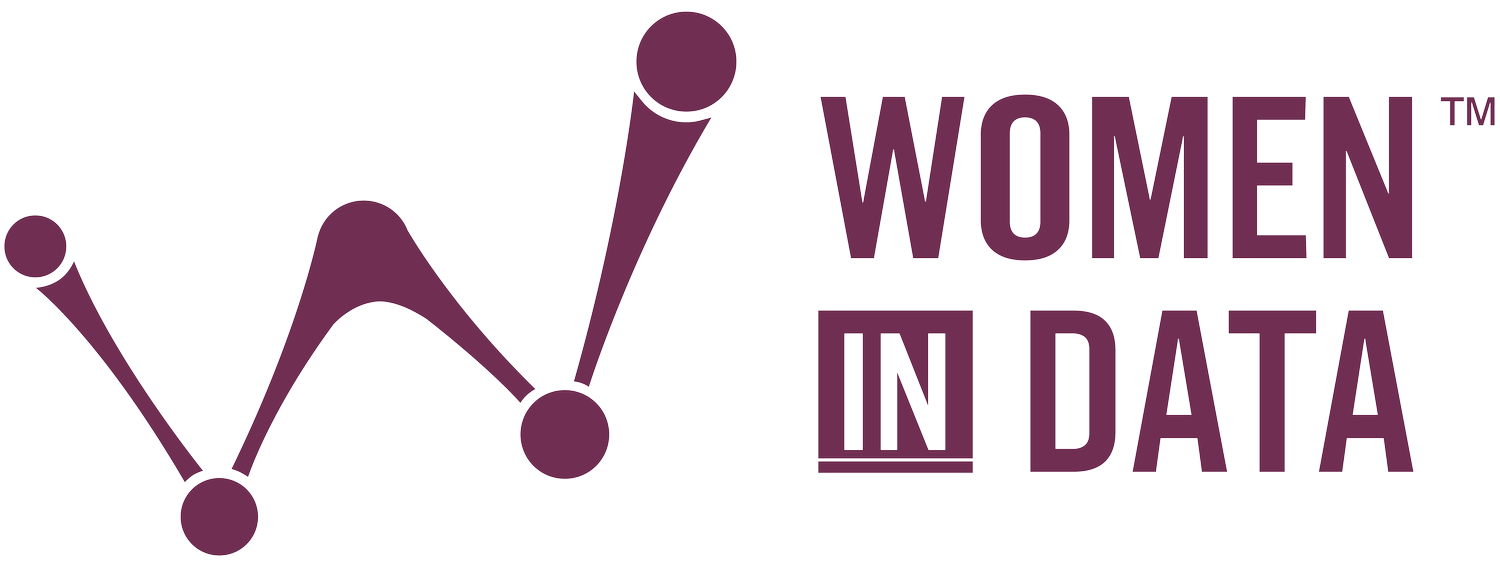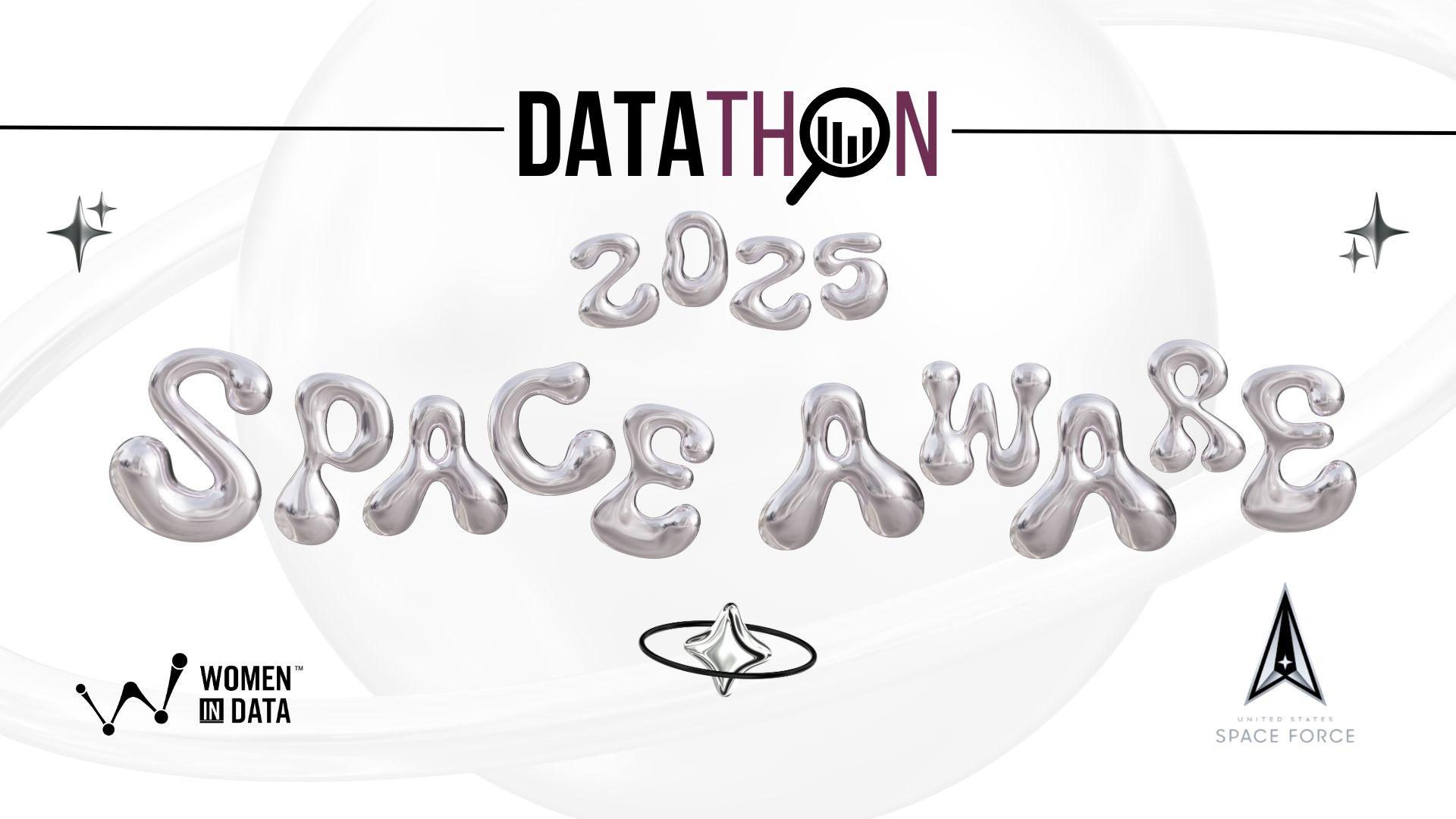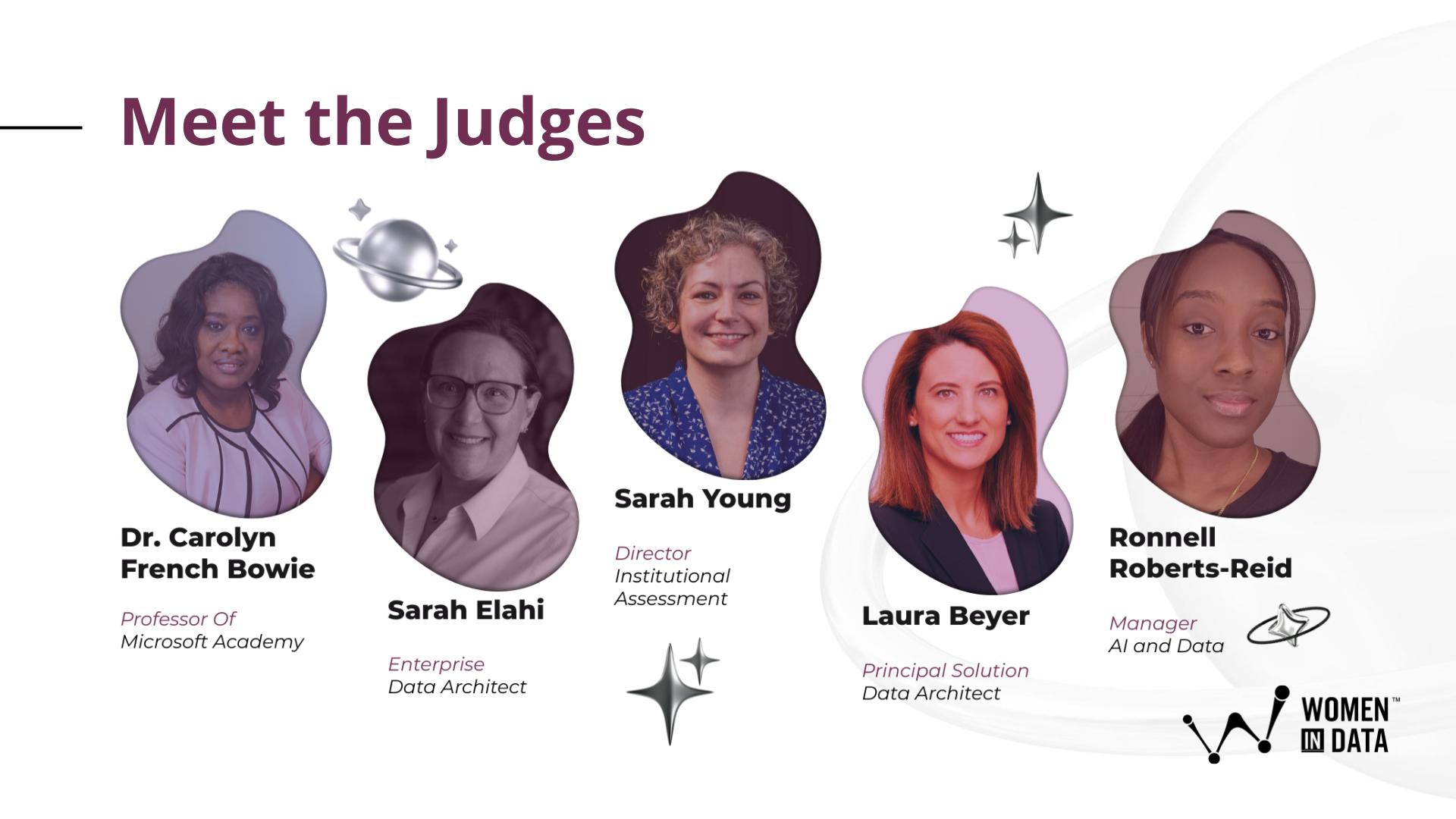2025 Datathon: Space Aware
The 2025 Women in Data Datathon, themed Space Aware, in partnership with the United States Space Force has come to a remarkable close. This year’s theme, SpaceAware: Enhancing Space Situational Awareness, challenged participants to think big, literally, beyond our planet. Teams explored systems, technologies, and data that help us monitor, track, and protect our activities in space. We celebrate each teams creativity and share the incredible solutions they’ve built.
We had 322 participants from 58 countries, representing LATAM, EMEA, APAC, and North America. Together, you formed 87 teams and submitted 37 completed projects. That is an incredible global effort. Thank you all for your energy, collaboration, and innovation.
Why Space Aware?
Space isn’t just about rockets and satellites, it’s about the data. Modern space missions, from Mars rovers to Earth-observing satellites, produce staggering volumes of data. Space-derived data powers climate monitoring, weather forecasts, disaster response, and environmental protection. It’s used to safeguard life on Earth. 2023 saw a record 223 launch attempts (212 successful) and over 2,800 satellites deployed, up 23% from 2022. This growth highlights the surging demand for data management and analytics in space operations. Projections estimate 150+ launches annually by 2026, and 200–300 per year by 2040.
It raises awareness of real-world challenges, like debris tracking and climate monitoring. It delivered education, through hands-on experience with time-series, image, and spatial datasets. And it drives advancement, creating solutions that benefit space operations and even life here on Earth. This Datathon has been an opportunity for all of us to see how data can shape the future.
“The WiD Datathon is a time-constrained event where people form teams to collaborate intensively on data-related projects. Datathons are a great way to inject creativity and fun into a data team’s work, explore unusual ideas, and identify promising avenues for furhter work or investigation. it is an R&D function with team bonding and fun built in”
Judging Criteria
Judging was no small task. Our panel reviewed projects using four criteria:
Depth of Analysis: How thoroughly did they explore Space data and deliver meaningful insights?
Practical Application: How relevant and actionable were their recommendations?
Presentation Quality: Was the presentation clear, engaging, and creative?
Originality and Innovation: How unique and innovative were the team's solutions?
Congrats to everyone who participated in our 2025 Datathon! Many of you stepped into unfamiliar territory: new data modalities, orbital mechanics, spatial analytics, working across time zones. Some experienced their first datathon ever and embraced every challenge.
Meet the Winning Teams
The competition was fierce, but three teams stood out with their impactful solutions:
1st Place: Cosmic Insights
Project: Sustainability in Orbit: Traffic and Rish Report
Team Cosmic Insights, Kathryn Kashitsyn, Ashley Loong, Katia Lopes-Gilbert, and Esha Sayaji took top honors with their groundbreaking analysis on space traffic and orbital risk.
As Earth’s orbit grows more congested, with satellites skyrocketing from 3,371 in 2020 to over 15,000 by 2025, the risk of collisions and debris is at an all-time high. Cosmic Insights tackled this challenge by:
Cleaning and analyzing over 9 million rows of orbital data.
Mapping orbital density and debris-to-payload ratios.
Identifying thousands of daily close approaches, some within 1 km or less.
Recommending international standards, automated avoidance systems, and debris mitigation policies to ensure the sustainability of space.
Their project not only highlights today’s orbital risks but also provides actionable insights for policymakers, industry leaders, and space agencies to safeguard the future of space exploration.
2nd Place: Astrolyticas & Insightellites
Project: Crash Course: Avoiding Collisions in Space
This video highlights the incredible work of Katie Booth, Caitlin Hanafee, Julia Realander, Nicole Jackson, and Rachel Crutchfield, who earned second place. With the rapid rise of satellites in Low Earth Orbit (LEO), the team tackled the growing challenge of collision detection and risk management. Their analysis focused on:
The problem: Increased LEO traffic makes it harder to detect high-risk conjunctions.
The impact: Detection errors lead to costly burns, fuel loss, and imaging downtime.
The opportunity: Using predictive modeling to prioritize high-risk events and enable smarter maneuvers.
Focusing on Maxar Technologies, the team compared launch mass, power, durability, and expected satellite lifetimes, revealing that Maxar’s satellites consistently outperform peers in power, durability, and safety — resulting in lower collision probabilities.
Their approach included:
Building dashboards to track satellite performance and conjunction risks.
Running predictive models, with logistic regression outperforming other methods in identifying collision risks.
Providing clear recommendations: prioritize high-risk orbits (LEO, Sun-Synchronous), enhance space situational awareness (SSA) efficiency, and integrate environmental and operational factors for stronger predictions.
The project showcases how creative modeling and visualization can guide space safety policies and support industry leaders in keeping our skies safer.
3rd Place: SpacedOut
Project: SpacedOut: Immersed in Space, Grounded in Awareness
Preetha Saha and Jessica Lipscomb secured third place with their innovative approach to predicting satellite decay risks in Low Earth Orbit (LEO).
Their work combined six years of TLE data from Space-Track with geomagnetic and solar activity data to uncover how space weather impacts satellite lifetimes. Using Python, XGBoost, and visualization dashboards, they developed a decay risk prediction workflow with strong performance, achieving accuracy scores as high as 0.90–0.92 for certain orbital groups.
Key achievements included:
Modeling semi-major axis decay trends across multiple years.
Highlighting the importance of space weather factors like solar flux and geomagnetic storms.
Creating a Decay Rate Predictor tool, where users can input satellite data to receive decay risk predictions.
Providing recommendations: maneuver satellites to extend lifetimes, increase awareness of space weather impacts, and develop time-series models for future decay predictions.
SpacedOut’s project underscores how predictive modeling can protect satellite operators, scientists, and commercial users from costly risks, while supporting long-term sustainability in orbit.
Thank you to our fantastic judges for the Datathon! We could not have had a successful Datathon without all of you! Thank you for taking the time to review all the great projects we have received.
To every participant, whether you submitted a final project, shared an idea in the WiD Portal, or just showed up to learn, thank you.
Women in Data will continue to foster innovation through upcoming programs and events. We invite you to stay connected by joining the WiD community for free here. Each Community member gets updates on our next 2026 Datathon event plus networking events.



